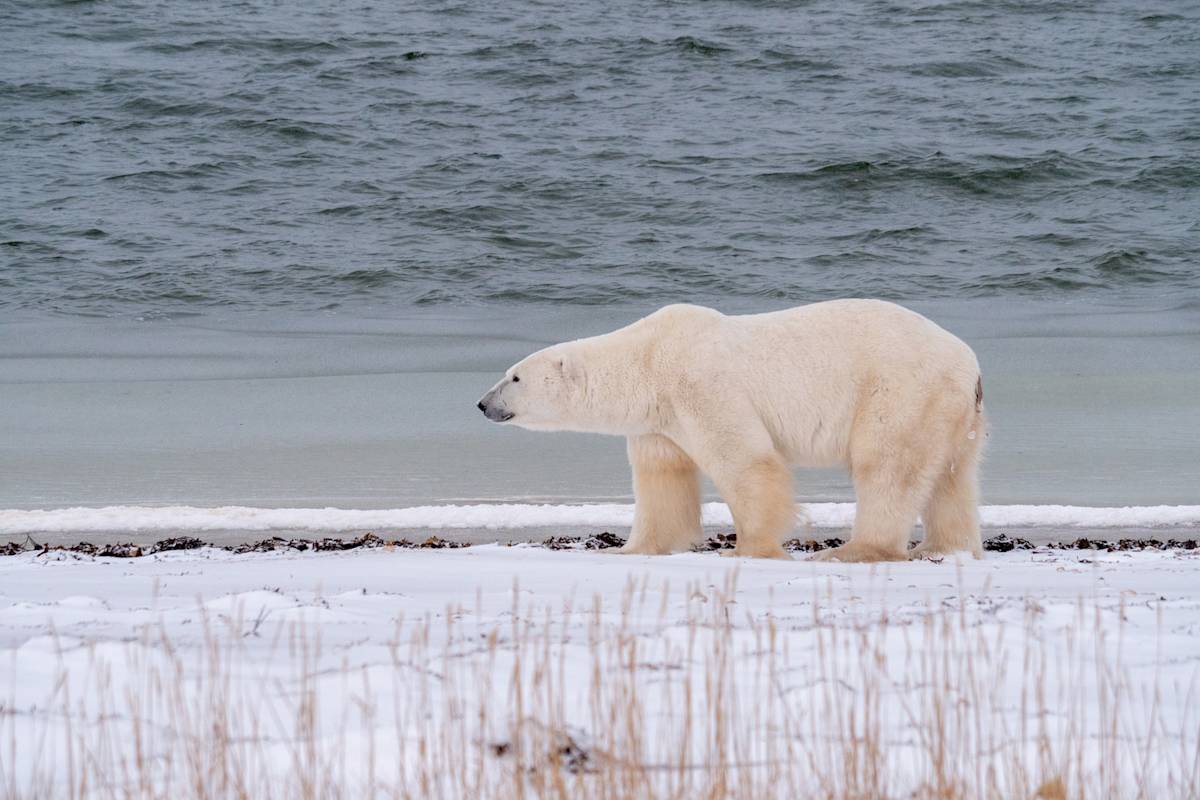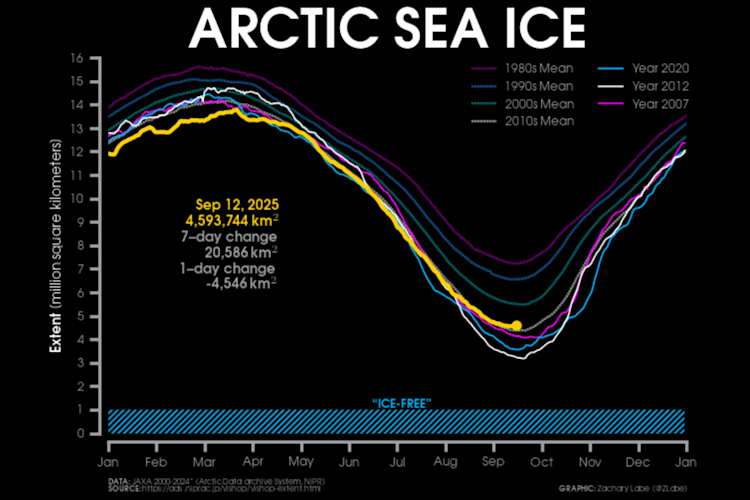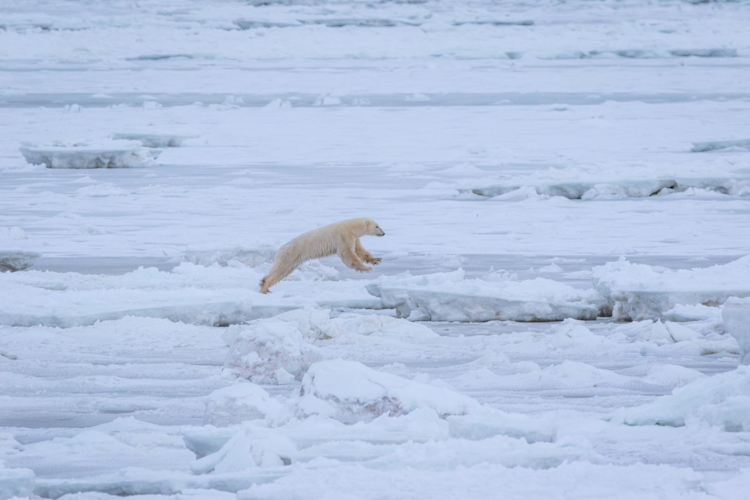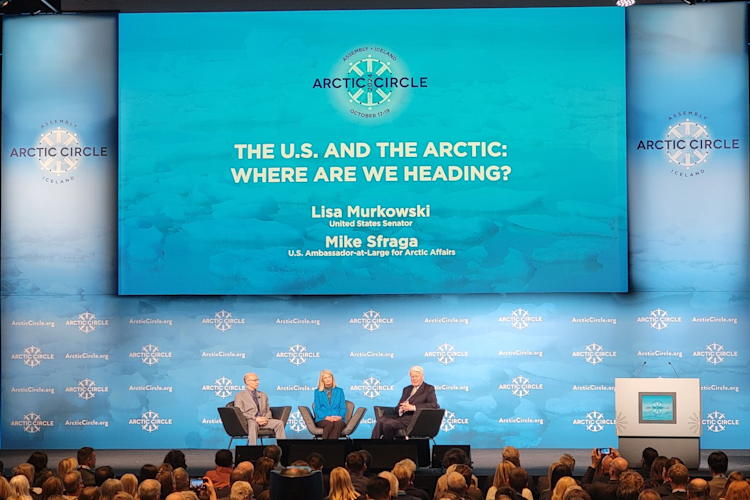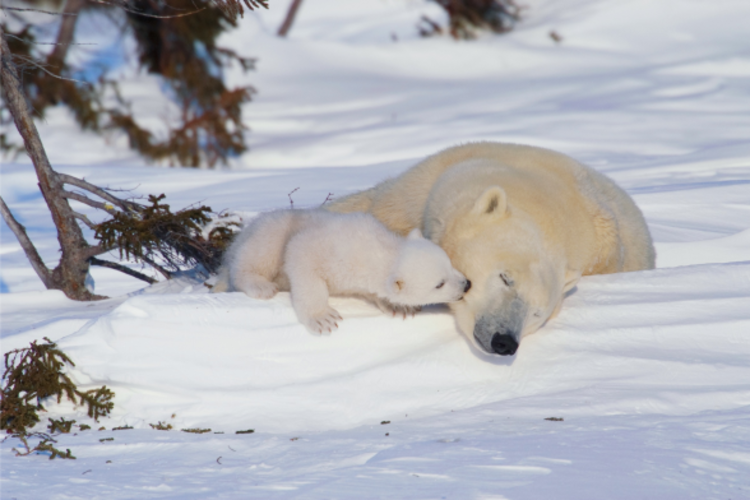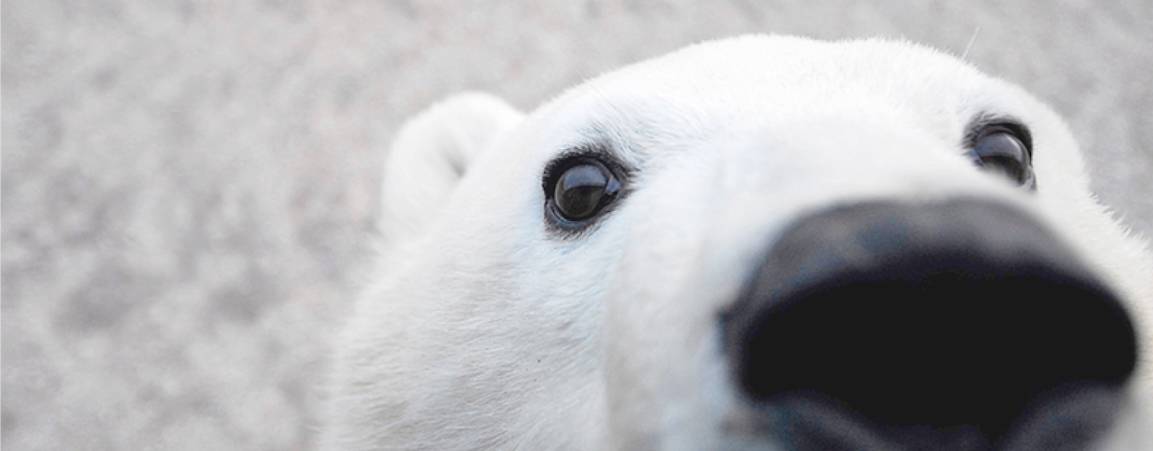The unusual ice patterns this year in Hudson Bay began in May, when strong and persistent winds pushed the ice from the eastern and southern part of the bay to the west, causing it to pile up. This resulted in an early ice break-up of June 5 in Southern Hudson Bay. The Western Hudson Bay bears, however, benefited from the unusual conditions and had a relatively late break-up of July 15, one more in keeping with break-up patterns of the 1980s.
Due to the uncommon break-up, the Southern Hudson Bay polar bears had to make a choice in the spring or early summer: either head to shore very early or stay with the rapidly moving ice as it was pushed from east to west. For the bears that chose to head to shore, this will be a tough year.
Despite natural variation from year to year in break-up and freeze-up times on Hudson Bay, the outlook for both of these populations is sobering. A recent study shows that we could lose both the Western and Southern Hudson Bay polar bears should nations fail to meet the goals set at the Paris Climate Agreement, underscoring the urgent need to take action on their behalf.
In addition to addressing climate change, Polar Bears International works to reduce conflict between polar bears and people as the bears spend more time onshore due to longer ice-free seasons. We act primarily as a hub, innovator, and convener around polar bear coexistence, with projects including:
Testing whether “bear-dar” early-detection radar systems could be used to alert communities of approaching polar bears. If successful, these tools could be used by communities and work stations across the Arctic.
Supporting Churchill’s Bear Smart Working Group, which could serve as a model for other frontline communities.
Promoting exchanges between frontline communities so they can exchange information and learn from each other.
Offering customized polar bear safety coloring books, posters, and educational materials to northern communities to promote culturally relevant and regionally specific safety tips.
Working with Cree communities in Ontario on bear-safe measures, listening to their needs and helping to provide the tools that work best for them.
Supporting research to manage waste in the North, reducing attractants to polar bears.
Conducting studies on the effectiveness of various deterrents and providing training in their use.
Editor’s note: On December 5, a polar bear in the Southern Hudson Bay region attacked a man. Full details on the incident, including the condition of the bear, have not yet been released. We do know, though, that with decreased access to ice, polar bears in this area will spend more time on land and away from the seals they depend on for food. That means increased potential for encounters — which is why efforts to reduce conflict and promote coexistence are so important.
